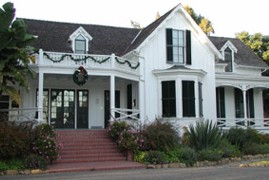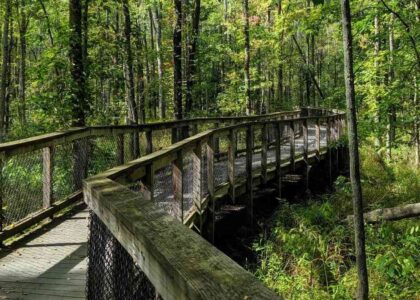Welcome to The Stow House, an emblem of Goleta’s rich agricultural heritage. This historical ranch, located on what was once part of the La Patera Tract, offers a glimpse into the pioneering spirit of the Stow family and their significant contributions to the commercial lemon industry. The house, built around 1872, is a striking example of Carpenter Gothic architecture, believed to be designed by the Bay Area architect Frank Walker. It was originally the home of Sherman P. Stow, son of William W. Stow, a prominent railroad attorney from San Francisco. Sherman, along with his wife Ida and their six children, transformed the ranch into a thriving lemon-growing enterprise.
As you explore the grounds, you’ll encounter the site of Edgar W. Stow’s Office/Laboratory. Edgar, who managed Rancho La Patera from 1915 to 1949, was an innovator in agricultural practices. His work in developing lemon tree buds and rootstocks, along with his custom insecticide formula, set new standards in citrus cultivation. His contributions were recognized in 1936 by the California Citrograph magazine, which highlighted his advances in irrigation and scientific farming methods.
The Stow House’s story is not just about agriculture; it’s woven with personal tales. Edgar W. Stow, also a State Assembly and Senate member, famously opposed Prohibition by planting a vineyard and crafting wine in a cellar beneath the house. The Bunkhouse, constructed in 1914, served as living quarters for Chinese immigrant workers, a testament to the diverse cultural tapestry that contributed to the valley’s development.
Today, the Stow House is preserved by the Goleta Valley Historical Society and is listed on the National Register of Historic Places. It stands not only as a reminder of the Stow family’s legacy but also as a symbol of the agricultural innovation that shaped the Goleta Valley.




